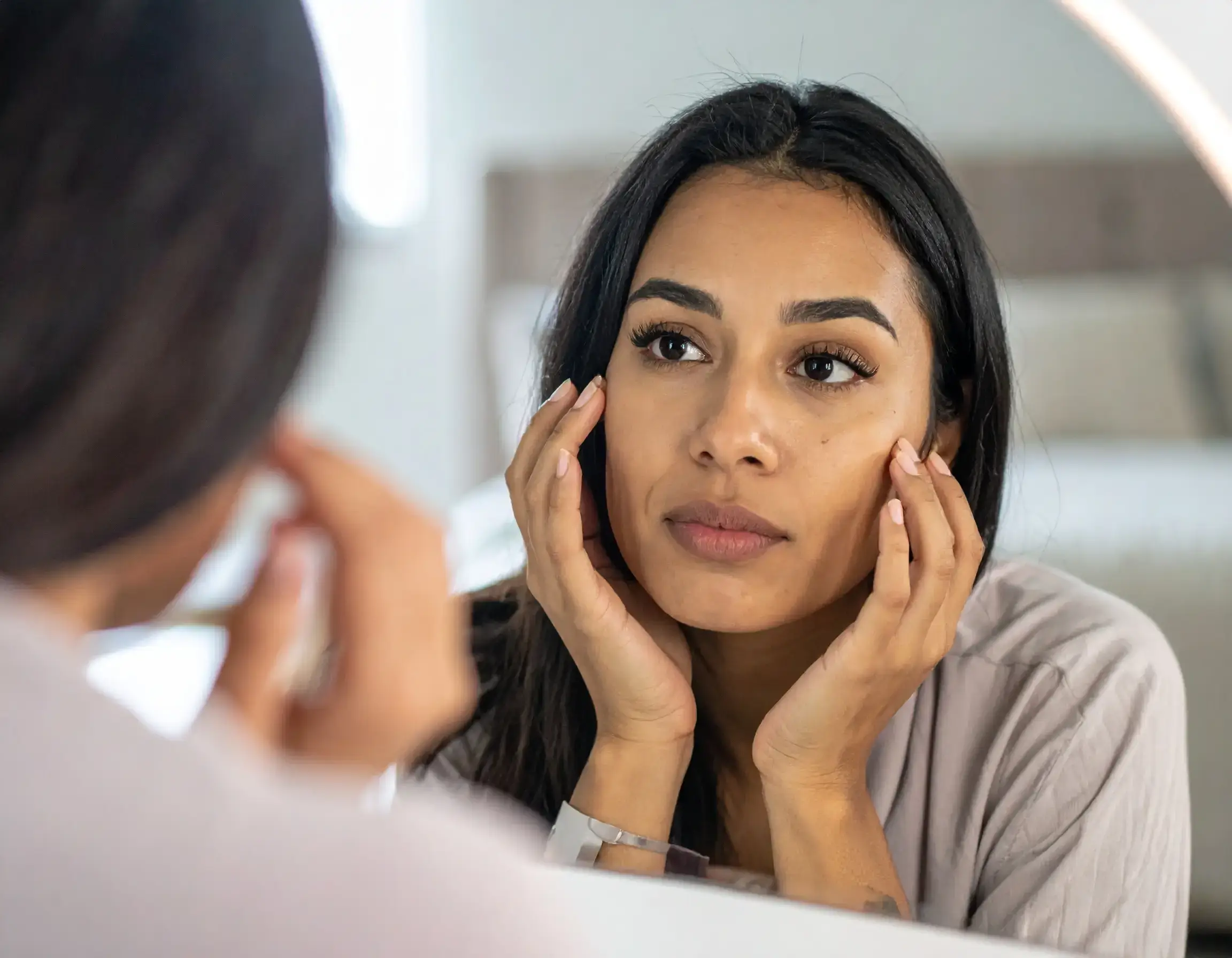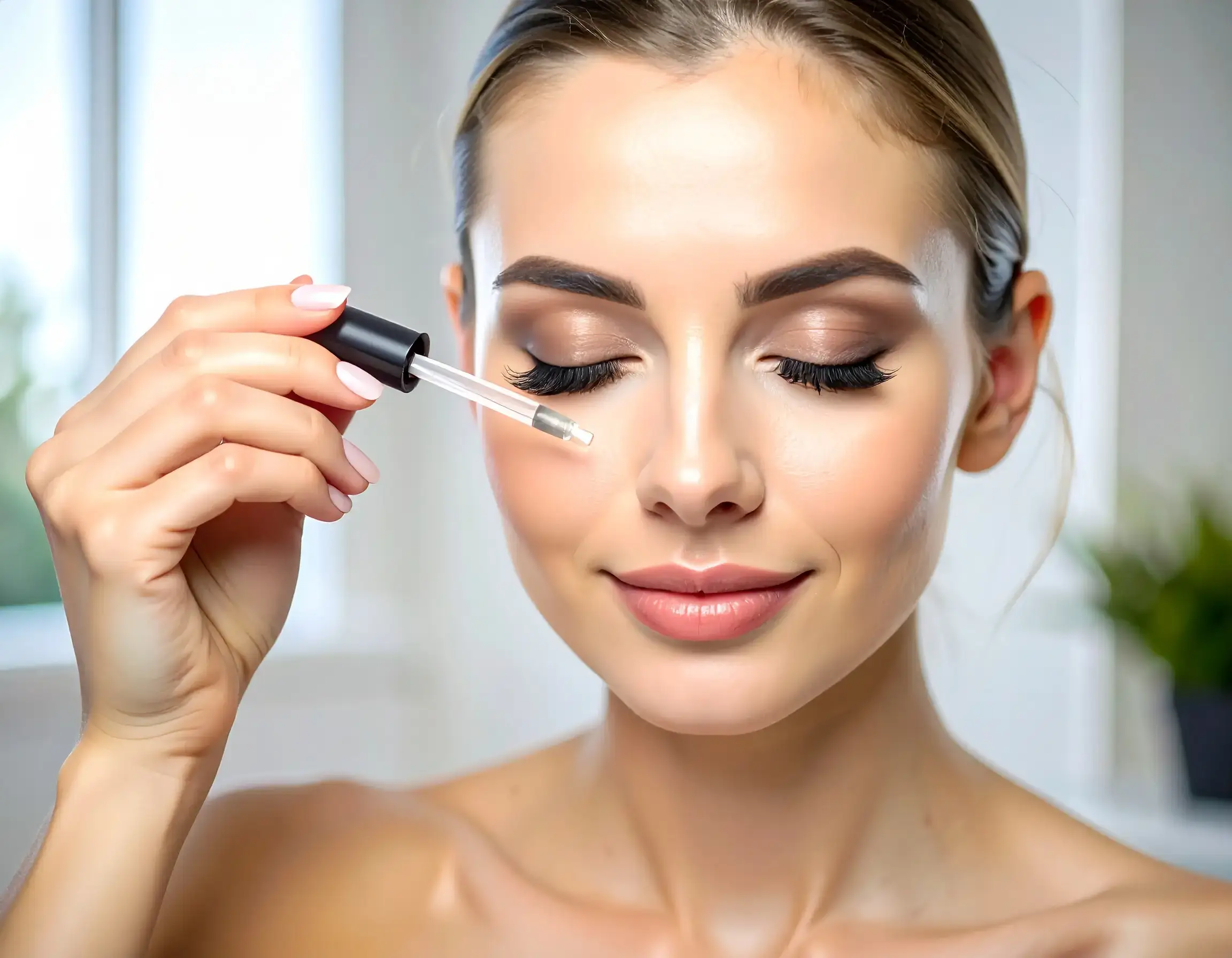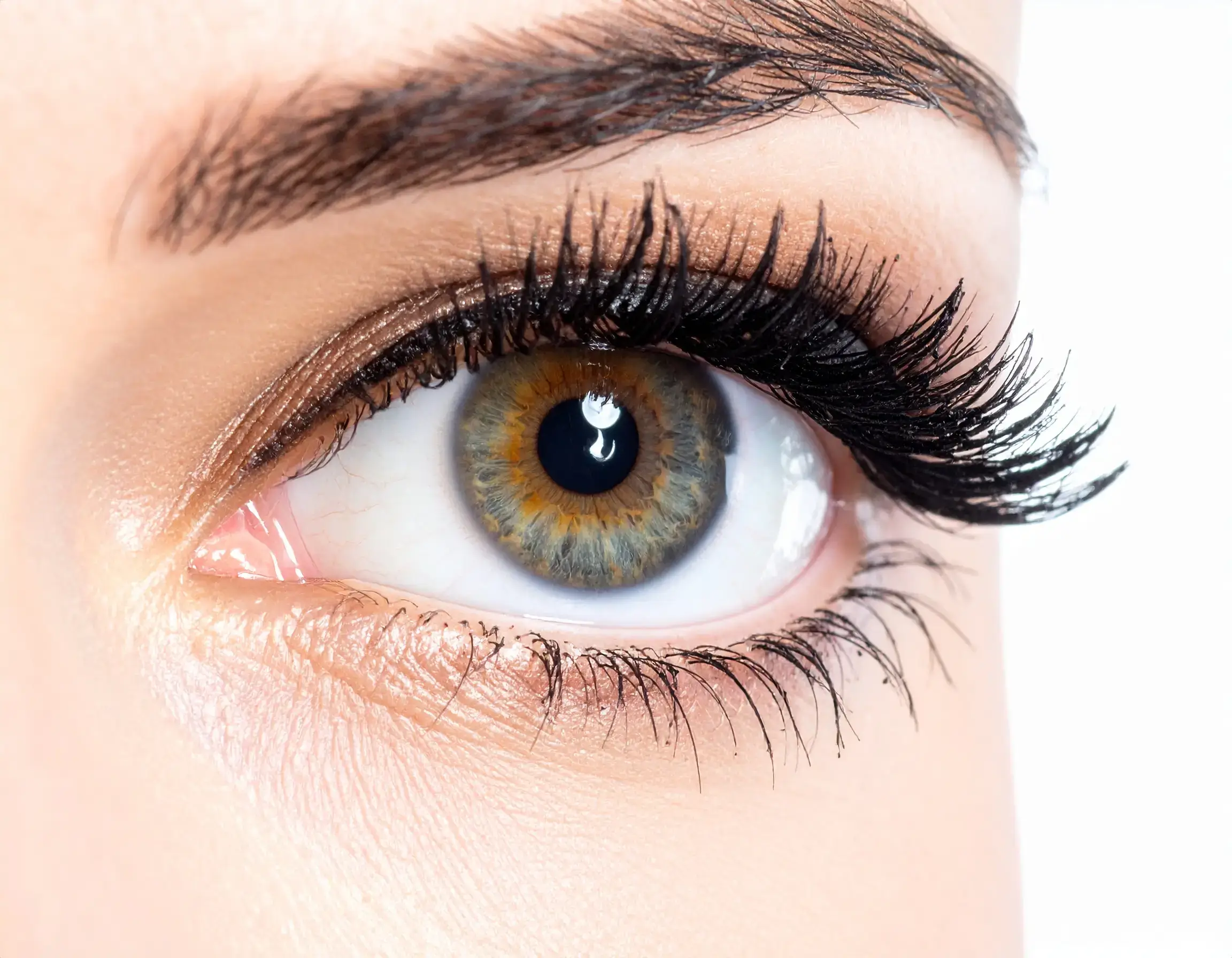Eyelash regrowth is much more common than people might imagine. Our lashes have a growth cycle that continues throughout our lives. It all starts with the hair follicle and the health of these follicles is what really counts for each eyelash. When the follicle remains healthy and the eyelid is intact, new lashes do grow back, even after natural shedding or accidental loss.
What causes eyelash loss?
We view eyelash loss as a multi-factorial problem, influenced by numerous causes. Some are benign and others require more attention or even medical assistance. Knowing the true cause can help us select the appropriate actions to either nurture healthy lashes or recover them.
Alopecia is one of them. This condition targets hair follicles and can present as, among other things, alopecia areata, a patchy form of hair loss, including of the lashes. Occasionally, this is immune-related, as the immune system begins mistakenly assaulting healthy hair follicles. Losing lashes this way can be scary, but follicles often can regenerate over time.
Burn accidents can also damage lashes. A burn to the eyelid can often scorch the hair and occasionally the skin. If the roots under the skin remain healthy then lashes can return, but it can be a matter of months. The skin’s regenerative capacity is robust, but deep burns could result in permanent loss if the follicles were destroyed.
Chemotherapy is another such cause. Cancer treatments are hard on fast-growing cells, and that includes hair. Chemo patients are aware of their lashes thinning or shedding. The good news is, lashes typically begin to regrow a few weeks after treatment ends. However, hair texture or color can sometimes shift a bit.
Infections and inflammation around the eyelid, such as blepharitis or styes, can cause lash loss as well. These problems usually arise from bacteria or clogged glands. When the roots become inflamed, eyelashes can shed in small clumps. Keeping the eye area clean and practicing good hygiene cures most people and they heal & regrow the lashes.
Eyelash loss can be an indicator of skin diseases, hormonal changes or endocrine issues. Those with thyroid problems, such as hypothyroidism or hyperthyroidism, tend to experience thinning lashes. Hormones have a huge influence on hair growth everywhere on your body and slight imbalances can cause lashes to shed more quickly than normal.
We encounter conditions such as trichotillomania, in which stress or anxiety results in people pulling out their own lashes. This uncontrollable behavior can make your lashes fall out in patches. Even stress, in the absence of pulling, can drive more lashes into the resting phase, so they drop out earlier.
It’s natural to lose as many as 5 lashes a day due to the eyelash growth cycle. Old lashes complete their telogen phase and are replaced by new ones. It’s a good, essential process. Lash loss becomes a concern only if it’s significantly beyond the norm or is accompanied by other symptoms.

How long does it take for eyelashes to grow back?
For all of us, lashes begin to reappear around 6 weeks if the follicle is unharmed. It can take up to 6 weeks and sometimes even 3 months for eyelashes to grow back. This large range is primarily due to the fact that everyone’s body recuperates and hair regrows at a different rate. The primary factor that determines the timeline is the condition of the follicle. If the base of the lash, where growth begins, is intact and not traumatised too severely, we’re good to go for lashes returning in a couple of months.
The eyelash growth cycle divided into stages, with the anagen, or “growth” stage, taking 4-10 weeks. In this phase, new lashes begin to grow from the follicle, pushing out the old lash or filling in spaces where lashes fell out. For the majority of us, lashes grow between 0.12 and 0.14 millimeter a day. That sounds minor, but weeks, it accumulates. A healthy eyelash can grow up to 12 millimeters long, which is usually the length we tend to see as being “full” on ourselves and our clients.
Health is a huge factor in the speed at which lashes return. If the eyelid is red, swollen, or infected, growth can slow way down. Once the skin around the eye is back to normal (no swelling, no redness), lashes should grow back quickly, typically within a couple of weeks. An eyelash’s total lifespan is approximately 4 to 11 months, but the portion you observe as lashes are growing back after loss is significantly less. For the majority of our patients, we notice that the majority of lashes are grown back by two months, provided the area remains clean and tended to.
Certain medical conditions can give it a drag. For instance, if you have a hair loss condition or if there was a severe reaction to a product, it could be longer. The same for those lashes that may have been yanked – if the follicle is harmed, it can require additional time, or sometimes, that lash won’t return.
Just be patient. So eyelashes take their time growing back, they aren’t instantaneous. So it’s just best to be gentle and refrain from rubbing or tugging at your eyes in the meantime while new lashes grow in.

How to help eyelashes grow back faster
We get a ton of clients asking if there’s a way to help eyelashes grow back faster. Eyelashes go through a natural lifecycle with three phases: anagen (growth), catagen (transition), and telogen (resting). This phase can last anywhere from 4-10 weeks. Most lashes attain around 12 mm at a languid, but consistent rate – approximately 0.12 to 0.14 mm daily. Lashes take an average of 6 weeks to 3 months to grow back. Understanding this cycle allows us to establish realistic expectations and choose the most effective means of assistance.
One easy method to assist with faster lash growth is via growth serums. Search for serums with safe, effective ingredients like peptides or panthenol. These can assist by feeding follicles and maintaining lash moisture. We still always recommend opting for doctor-recommended or well-reviewed products. We avoid using harsh chemicals or do-it-yourself concoctions because those can cause more damage than benefit. If you’re interested in a particular serum, consult with your eye doctor or reputable beauty professional.
Diet has a major impact on healthy lash growth as well. Introducing vitamins like Biotin and Omega-3 fatty acids to your meals can provide follicles with the nutrients required to grow robust and healthy. You’ll get Biotin from eggs, nuts and leafy greens themselves. Omega-3s are found in fish such as salmon and flax seeds. A balanced diet fuels not only your lashes, but your skin and hair in general.
Certain home remedies, such as castor or coconut oil, can assist lashes to grow – but we still recommend caution as always. If you want to test out these oils, just remember to apply with a clean brush and don’t let the oil run into your eyes! Oils can assist by moisturizing the lash area and preventing breakage, but the research is inconclusive. For the majority, doctor-approved treatments are safest.
Soft treatment goes a long way. Tugging on your lashes, rubbing your eyes or using harsh makeup removers can snap or pull out lashes prematurely. We advise our clients to use micellar water, or other gentle removers, always swiping gently and never scrubbing. Brushing your lashes gently with a clean mascara wand once a day can clear lash debris and dead skin, providing lashes room to grow.

The emotional toll of lash loss
The emotional weight of lash loss For most of us, it resonates on a more primal level. We observe this in our clients on a daily basis. There’s an undeniable emotional toll when lashes begin to thin or fall out, as it can rock our self-image and leave us feeling bare. We’ve encountered individuals who shield their eyes, bypass parties or steer clear of mirrors altogether. The self-consciousness is real and for some hard to shake.
The emotional effect is even more potent when lash loss is associated with health issues. Alopecia areata or madarosis can be difficult for people to handle. We know from studies that adults and children both can suffer anxiety, sadness, or even depression. One research on children with alopecia areata found that a lot of them have issues with self-esteem, particularly when they lose eyelashes. These kids might feel isolated from their peers or concerned about being noticed. Adults aren’t spared, either. We’ve witnessed grown women and men lose their confidence, even altering the way they behave at work or with those they care about.
Sometimes lash loss is simply a result of things beyond our control, such as autoimmune issues or side effects of medicine. Topical corticosteroids, for instance, can cause thinning or loss of lashes. Other times, it’s due to habits, like trichotillomania, when folks yank out their own hair or lashes. Regardless of the cause, the trauma is fairly equivalent. They’re ashamed, or even guilty, about something they can’t necessarily fix immediately.
We think it’s important to speak candidly about these emotions. In our studio, we love it when clients voice their concerns. When we discuss lash loss and its toll, we support others and let them know they are not alone. This support can be from friends, family, or professionals. We’ve witnessed how these candid conversations can be cathartic and grounding.
Self-care is essential to the experience. It’s not just about lash serums or treatments. It’s the little things – resting, affirmations, asking for assistance. We tell our clients that beauty is more than skin deep. Positive self-talk, routine and a dose of patience can take you a long way. It’s a process, but we’ve seen individuals rediscover their confidence and gain renewed strength for when their lashes reappear.

When to seek professional help
Knowing when to seek professional help makes a big difference if you find your lashes aren’t growing back as anticipated. It’s normal to shed a few lashes here and there, but there are red flags and scenarios that you can’t overlook. If eyelash loss persists for more than a few weeks or if the loss is greater than typical, it may be time to consult a doctor or specialist. This is particularly the case if you notice bald spots along your lash line or no new lashes seem to grow in after waiting for a significant period of time. At times, persistent bereavement can signal an underlying medical condition requiring specialized assistance.
We frequently encounter individuals who experiment with home remedies and OTC lash serums with minimal success. If these gentle treatments and self-care measures – like using gentle makeup removers or taking breaks from extensions – don’t help, it’s wise to consult a professional. Certain disorders – such as trichotillomania, where you absentmindedly tug out your lashes, or alopecia areata, an autoimmune condition that causes rapid hair loss – require professional assistance. These issues can’t be fixed with drugstore ointments or simple home remedies. They might require a combination of therapy, medication, and in some instances, more advanced interventions.
Infections or swelling on the eyelids, like styes or blepharitis, can cause lashes to fall out. Redness, swelling, or any discharge along the lash line are red flags. Receiving appropriate treatment early is essential to control the spread of infection and aid in healthy lash regrowth. If you’ve historically had allergies or skin issues around your eyes, a specialist will show you how to best care for your lashes without exacerbating the situation.
Others lose lashes from difficult medical procedures, such as chemotherapy. Some lose them following burns or trauma to the eye region. In these instances, visiting a physician or lash specialist can assist establish a strategy for healthy regrowth. They can recommend gentle products and offer other tips that ease the process.
We hear from clients who want to experiment with growth serums or new treatments but are overwhelmed by the options out there. If you want some real advice on what works and what doesn’t, a lash expert can check out your specific needs and guide you toward tried and true safe options. We stay on top of the best products and approaches, and we enjoy assisting each individual discover what suits their lifestyle and objectives.
